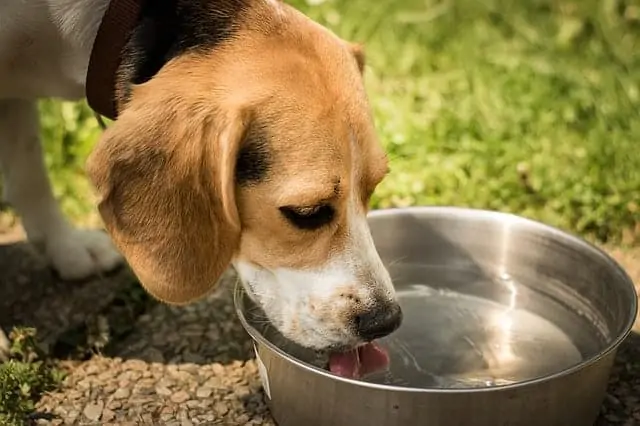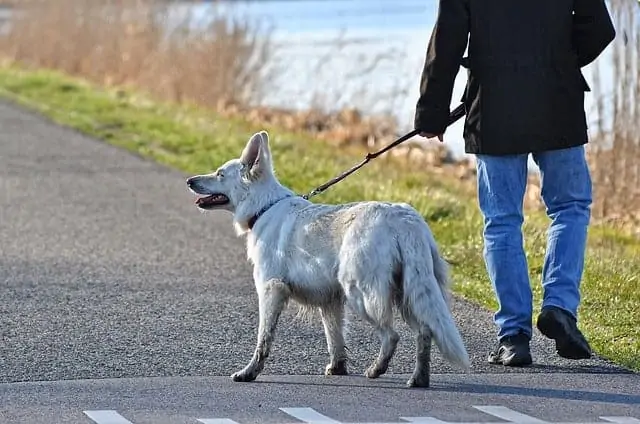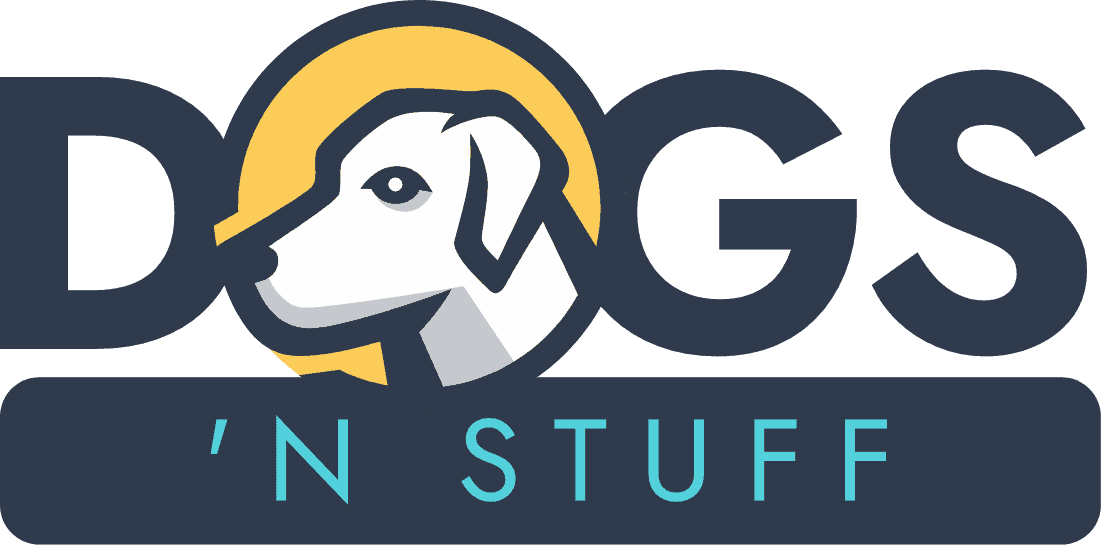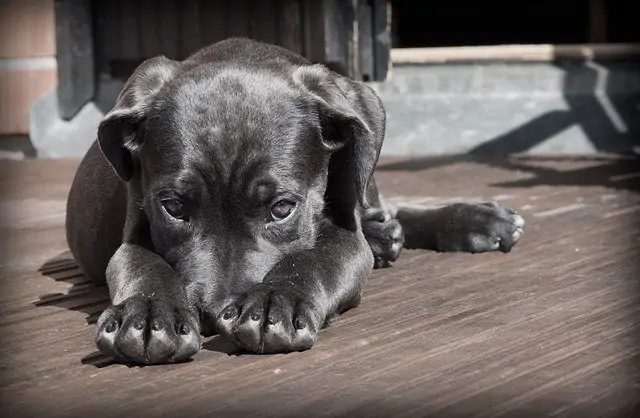Many people might say that dog scooting is normal, and you should not be worried about it. But if it is your first time to see your dog scoot and he or she does it multiple times a day, this habit might not be as simple as it is. Underlying issues might have caused this behavior.
If you are a first-time fur parent, dog scooting might be new to you. But the good news is, there are simple yet proven home remedies to stop your dog from scooting.
Before we talk about proven dog scooting solutions, let us first discuss why this behavior is happening.
Table of Contents
Why Do Dogs Scoot Their Butts on The Floor?
Scooting is seen when your dog drags its bottom incessantly. There are many reasons why your dog might be doing this, and here is a list of why they do:
- Your dog might have parasites (tapeworm, ringworm) in their body
- They might be infested with tick or flea
- There might be dirt or poo on their rear end
- Their anal glands or sacs are inflamed
These reasons are very uncomfortable for your furry friend, but we have a list of simple remedies to solve this scooting situation.
Cleaning Their Bottom Regularly
Most of the time, dog scoot because their bottom is dirty. Poo or even mud might have been stuck on their butt. To get rid of this discomfort, they tend to drag their bottom.
Ticks or fleas may also cause this itch. This is why you need to maintain the cleanliness of their dogs’ butts.
You can either wash your dog’s butt with soap and running water to get rid of excess poo or mud.
If you are in a hurry, you can use pet wipes to get rid of the dirt. If you also have just walked your dog outside, it is best to check if insects and parasites have clung to your dog.
Ticks and fleas, for example, love to stick to dogs’ paws, ears, neck, and butt. Some of them you can’t easily spot, but we can see most of these parasites with our naked eye.
The best way to get rid of them is to yank them off using your fingers or with the help of tweezers- just make sure that you don’t squeeze these parasites because doing so will just help them spread their eggs.
Express Your Dog’s Glands With Your Fingers!
It is beneficial if fur parents like you know how to do first aid treatment on your dog. Even in the absence of a vet, you can soothe your dog from the discomfort of inflamed anal sacs.
An infection causes a dog’s anal sacs inflammation. You would know that there is a presence of infection in your dog’s anal sac if there’s a pus-like fluid coming out of their butt.
Now, the ideal treatment for this is, of course, rushing your pet to the vet. At times like this, when vet clinics are closed due to CoVid-19, it is much safer for you if you express the fluid at home.
In order to perform a manual dog anal sac expression, you will need:
- Disposable gloves
- Alcohol
- Clean cloths
And follow this dog anal sac expression:
- Place your fingers outside the sacs at 4 o’clock and 8 o’clock positions.
- Gently squeeze the two pouches to drain them.
- Wipe the skin clean with cloths soaked in alcohol after the procedure.
If you do this, you can guarantee an instant relief for your dog.
If the infection is left untreated for a very long time, you might not be able to drain the pus yourself because your dog might be fussy and won’t let you touch their butt because they are in pain.
Please seek a professional veterinary’s help immediately when this happens, because they also have to prescribe antibiotics to prevent further complications this condition might bring about.
Make Your Dog Drink More Water

Constipation is a usual problem with dogs, mainly if they feed them with dry kibble more often. This condition might be the reason why your dog scoot. So fur parents should make sure that they monitor their dog’s water intake.
Understandably, some dogs might not be a big fan of drinking water, as I have personally experienced, but we can’t just give up on them. What usually works is to add water with their kibble so they would not only eat their food, but they will also be able to drink water too.
Investing in a drinking fountain is also a good idea, so your dog will be able to enjoy the water drinking process more. A needleless syringe filled with water is also an excellent way to make sure that they drink their water after taking vitamins.
Give Your Dog More Fiber

You might have watched countless dog behaviorist and veterinarian videos on the internet with regards to this topic. A high fiber diet is beneficial for dogs, and unlike most of us humans, they often enjoy it.
The bright side of a fiber-rich diet for our pets is that this can help empty the anal glands, making them more comfortable and stops the from scooting often.
Flax and chia seeds incorporated with their dog food, together with sweet potato or squash, can help with their bowel movement. However, bear in mind that all dogs are unique.
So, it is safer to do this gradually to monitor how your dogs’ body reacts to the change in their meals.
Monitor Your Dog’s Weight
Malnourished or overnourished dogs are very prone to a lot of canine metabolic diseases.
It is also crucial that we are wary about the dog food that we give to them. Some dog foods are saltier than the other, which would be harmful to their kidneys; some have more carbohydrate fillers in them, which is terrible for their overall health.
Healthy options such as whole organic foods are still the best for dogs, especially puppies because they have such tiny organs that could process whatever you make them.
Make Sure To Give Him Enough Probiotics
Probiotic treats and supplements are being encouraged by most veterinarians for their good effects in dogs’ gut.
Experts suggest that probiotic-rich food such as yogurt and other treats with probiotics are efficacious in lowering the inflammation and emptying the anal sacs.
Still, consult your vet on the best options for your dogs concerning probiotics.
Warm Compress Works
Anal sacs drain on their own when they are not inflamed. A warm compress can be applied to your dog’s bottom to help ease the inflammation. Using a compress is one of the best home remedies for dogs’ inflamed anal sacs because all you have to do is prepare warm water and clean cloth.
Follow these steps in applying a warm compress to your dog’s inflamed anal sacs:
- Soak the cloth in warm water.
- Adding Epsom salt in the water can also be helpful with this treatment.
- Wring the material and apply it to the bottom of your dog.
- Let it be on top of the dog’s affected area for about 5 minutes.
- Then repeat the process as needed.
Keep Your Dog Active

It is necessary to keep your dog moving every day. Exercise is perfect for dogs because active play could help improve their heart health, lungs, and joints. Being active can also stimulate a dog’s digestive system more, which enhances its efficiency in digesting their food.
Taking your dogs out for a walk is the best way to do it. Aside from the exercise your dog gets while walking, that’s also the time for them to potty. Emptying their stomachs could lead to the elimination of by-products in the anal sacs.
Use Witch Hazel on dog scooting
Who would have known that a beauty product could ease our dog’s scooting? I did not, but imagine how relieving this might be for us to know that remedies are available right on top of our boudoir!
Witch Hazel is a perfect anti-inflammatory treatment. Dogs who often scoot mostly suffer from sore bottoms. This condition is quite itchy and painful for them. Witch hazel could help in relieving the soreness and itch.
Alcohol-free and unscented witch hazel is the best option in treating your dogs’ sore bottom. All you have to do is to dispense a generous amount of witch hazel on a cotton round and pat it gently on the painful portion of their butt.
When To Seek Help From A Vet
When your dog keeps on having repeated problems with their anal sacs, it is crucial to take him or her to the vet. Anal sacs may not only be inflamed, but cysts can also grow around it.
Cystic mass growing around the anal sac may be an adenoma or adenocarcinoma. An adenoma is a benign mass, while adenocarcinoma is a malignant one.
Your vet is the best person to diagnose this, so do not hesitate to bring your pet to them to arrest the problem as early as possible.
Frequently Asked Questions
We’ve all been there when we’ve seen our dogs doing the dreaded scoot across the floor. When a dog does this, it is usually because they are having issues with their anal glands.
If their anal glands are not emptying when they go to the bathroom as they should, they can become painful for your dog.
While the anal glands should empty naturally, when this is not possible, the anal glands will need to be physically expressed.
This is something that is not pleasant for the dog, or the person carrying out the expression. However, it is very necessary.
Anal glands that are not expressed can become infected and very painful for the dog. As a result, if you notice scooting, you will want to take your dog to the vets. From here, they will manually express the glands.
In addition to this, if there is an infection present, they may also prescribe antibiotics if these are needed for the healing process.
How can I express my dog’s glands naturally?
In an ideal world, the dog’s anal glands should empty naturally every time they defecate. However, if their glands do not express themselves properly, this is when issues arise.
In these situations, it is worth speaking to a vet about this to seek professional help before trying to express the glands naturally. However, there are a handful of natural ways that can help the glands to be expressed with a little help.
The best way you can help your dog to express their anal glands is to ensure that they have good quality food. The food should contain a good amount of fiber.
It is this fiber that can be used to help the stool to encourage the anal sacks to express themselves naturally. You can also use fiber supplements that are created for dogs too.
You will also want to ensure that you are not over feeding your dog, and they are not overweight. In addition to this, ensure that they are drinking enough water.
This will help their stools to be softer and easier to pass. You can add water to their food to increase their intake.
Enzyme supplements that allow the digestive track to become healthier are useful. Exercise is another helpful thing as it will encourage the digestive system to keep moving.
Lastly, you can apply a warm compress to your dog’s bottom. This will help to soothe any painfulness they are experiencing.
Why does my dog rub his bum on the floor?
As we have already touched upon, the reason your dog is scooting its bum across the floor is because there is a problem with their anal sacs. They will scoot across the floor in an attempt to help their anal sacs to empty.
If they are experiencing pain from the lack of expression, this scooting can increase. While it can be frustrating to see, it is important that you take notice of this, and take your dog to the vets. They will then be able to express the glands for the dog, which will help with the pain.
However, in some cases, the scooting can be linked to parasites or worms. This is why it is important to ensure that you are treating your dog for fleas and worms regularly to stay on top of this.
Why is my dog still scooting after glands expressed?
After your dog’s anal glands have been expressed, the scooting should come to a halt. This is because it usually helps to stop the pain and discomfort that they have been experiencing.
However, in some cases the scooting will not stop straight away. For some dogs, they may still scoot for 1-3 days after their sacs have been emptied. While this can be frustrating to see, it is something that can happen.
Even so, if your dog is persistent with this, and still looks as though they are in a lot of discomfort, there may be an underlying issue you are not aware of. In this instance, you will want to pop to the vets and have your dog checked over just to make sure you rule everything out.
This may be a sign that there are other issues, such as parasites, an infection, or even allergies present.
What causes dog glands to fill?
There are a handful of reasons why a dog’s anal glands fill. While they should empty consistently, if there is not enough pressure placed on the sacs, this will prevent the liquid from being released. If this occurs over some time, the sacs will become full and painful for the dog.
In addition to this, if the glands are not emptying correctly, they can potentially become compacted or blocked. If this is not resolved, it can be uncomfortable for the dog and can lead to other issues too. The main reason is that the glands are not being expressed naturally as they should be.
What breeds of dogs need their glands expressed?
Technically speaking, all breeds of dogs may potentially have anal gland issues. While this may be a one time occurrence, for other dogs it is a continual thing. While the smell is not pleasant, and it is uncomfortable for the dog, it is something that can be managed.
Even though any dog can potentially suffer from this, there are certain breeds of dog that are more prone to anal gland issues than others. Some of the dogs that typically suffer from these issues include smaller dogs.
Some breeds include beagles, basset hounds, chihuahuas, cocker spaniels and miniature poodles. These dogs are more likely to need treatment and manual expression every few months.
How much does it cost to express dog glands?
It is difficult to say an exact price as every vet will charge a different amount of money. However, for a general anal gland expression, you can expect to pay anywhere up to $50.
As the expression happens quickly, it does not typically cost a lot of money. However, if a dog needs monthly or regular expressions, the price can quickly build up.
If there are issues with the anal glands, and there is an infection, or they have been compacted, this will increase the costs significantly, and this can even be up to $1000.

